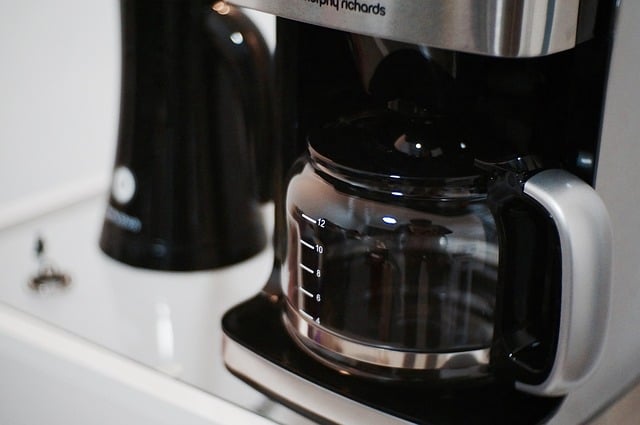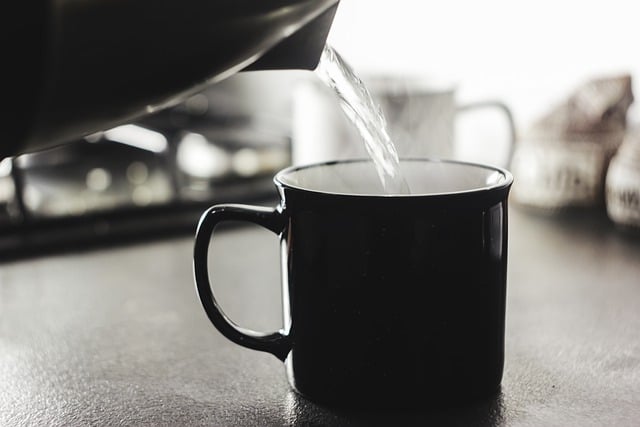Removing limescale can be notoriously tricky to pull off, especially if it’s built up over a considerable period. In addition to looking unsightly, it can clog your pipes, block your shower head, and even damage your appliances. In cities where hard water is prevalent, limescale can become a major nuisance.
This guide by Calibrecleaning will explain what limescale is, why it’s caused and show you simple steps on how to remove limescale.
What is Limescale?
You’ve probably seen it before. It has a white, chalky appearance and can be found on fixtures, sinks, tubs, toilets and inside your washing machines. Limescale is primarily composed of calcium carbonate and is caused by hard water, which you can find in many places around the world.
If stubborn limescale has plagued your home, the experts at CalibreCleaning are here to reveal how to remove limescale. We’ll go through the most effective methods so you can choose a homemade descaler that’s right for you.
Looking to get rid of limescale on your marble countertops and flooring? Check out this guide.
How to Remove Limescale from a Shower Door
Nothing detracts from your pearly white bathroom than limescale on your shower doors. And because your shower screen experiences high levels of moisture daily, it can become a frequent issue for many homeowners. The good news is that limescale can be removed without chemical limescale removers, which have abrasive materials that can be harmful to your skin.
1. Mix half white vinegar with half water and pour into a spray bottle. White vinegar is an versatile cleaning agent that can remove dirt from many surfaces and equipment, including bbqs and fridges.
2. Spray the solution over your limescale and let it soak overnight. If you’re in a rush, wait for 10-15 minutes.
3. Wipe off with a paper towel, rinse and repeat the above if mineral deposits remain. This also works as a soap scum remover so you can use it elsewhere.
How to Remove Limescale from Your Kettle and Coffee Machines

When water is heated in your coffee machine or kettle, calcium, magnesium and carbon dioxide molecules are broken down which cause limescale to form. Since we tend to use these items frequently, and in some cases daily, it helps to remove limescale the moment it appears.
Kettles
1. Fill your kettle with half water and white vinegar and leave overnight.
2. Pour out your solution, then fill it with clean water.
Coffee Maker
1. For your coffee machine, add your vinegar and water mixture to its water compartment.
2. Run your machine through a complete cycle without coffee inside, then run it twice more with water.
How to Remove Toilet Limescale
Trying to scrub toilet limescale deposits is a lost cause if you’re using the wrong products. Instead, a tremendous natural limescale cleaner that’s proven to work is white vinegar. This cost-effective household ingredient will break up the calcium and magnesium deposits without harsh chemical additives.
To use this limescale cleaner, do the following:
1. Pour 4 cups of white vinegar into your toilet bowl.
2. Let your vinegar soak overnight – this will allow the limescale to break up.
3. Use your toilet brush or an old toothbrush to scrub off limescale and rinse
4. If you’re left with an unsightly ring around your bowl, use sandpaper to rub it away gently
Read more about cleaning toilet bowls here.
How to Remove Limescale from Your Glass
Drinking a small amount of limescale isn’t harmful to your health, but it’s probably not a habit you’ll want to develop. For this removal method, we’re adding baking soda to the mix. Baking soda works as a limescale cleaner because it has a natural abrasive quality, making it perfect for scrubbing away limescale.
1. Mix equal parts water and white vinegar and pour into a spray bottle
2. Spray onto your glass, wait 5-10 minutes, and wipe clean.
3. For harder stains, mix baking soda with water and smear your paste on to the limescale. Leave for 30 minutes.
4. Wipe with a clean cloth and rinse. If a cloth doesn’t suffice, carefully scrape limescale off with a razor blade or similar tool.
How to Remove Limescale from Your Showerhead and Taps
Did you know that a leaky tap is often due to limescale buildup? Over time, limescale can develop on your rubber seals, causing water to leak out. If you’re looking to save money and prevent structural damage to your bathroom fixtures, follow these steps for limescale removal:
1. Pour vinegar and water into a plastic container and lower your showerhead inside. For taps, wrap them in a plastic bag with your vinegar solution.
2. Wait for 1-2 hours, then rinse away limescale with soapy water – if stubborn stains remain, scrub with a brush or scraping tool.
3. Soak a towel with vinegar and wipe over your showerhead/taps to remove any limescale residue.
If you can’t stand the vinegar smell, lemon juice is a great alternative. The citric acid in lemon juice is even more potent in tackling limescale deposits then white vinegar.
To do so, cut a lemon in half and squeeze the lemon juice out into a bowl. Put your lemon halves onto your tap spouts, submerge a cloth into the lemon juice, and wrap around the tap. Once limescale has softened, rinse with plain water.
How to Get Rid of Limescale from Your Pipes
Unlike calcium carbonate on your fixtures or appliances that are easy to spot, you can’t precisely see limescale on your internal plumbing. This hidden limescale can decrease water availability and cause blockages, eventually corroding your pipes and damaging its structure.
Before attempting to remove limescale, ensure the room is off-limits and switch off your water supply.
1. Mix 8 litres of white vinegar with a cup of baking soda to make your homemade descaler
2. Flush your solution through your pipes
3. Optional: With a long-handled brush, scrub your pipes to remove limescale stains
If you prefer a heavy-duty chemical cleaner to dissolve limescale, you can mix equal parts calcium and rust remover with water. Carefully flush your pipes with the solution and rinse the residue out. Because this option contains harsh chemicals, ensure it doesn’t flow to your drinking water supply. You won’t want your solution contaminating your drinking water.
How to Get Rid of Limescale from Your Iron
Always check your iron’s manual before using any limescale remover on your iron. Many irons have an integrated anti-calc which automatically stops calc buildup. If your iron is not equipped with an anti-calc, follow these steps:
1. Pour equal parts of water and vinegar until your water tank is 1/3 full.
2. Turn on your iron’s steam setting and find an old towel to iron on.
3. Iron your towel until your solution has all drained out, then repeat with clean water
Tips to Prevent Limescale Build Up
While the methods for limescale removal mentioned above certainly work, it helps to take preventative measures to avoid buildup.
Wipe away excess water: Taking a proactive approach can save you a lot of work for surfaces that regularly come into contact with hard water. After each shower, wipe down your bathroom tiles , shower walls, and shower screens, before the water dries and leaves calcium carbonate behind.
Descale regularly – Keeping a regular descaling routine is key to maintaining kitchen appliances that heat and evaporate water. Vinegar or lemon juice are fantastic household items to clean limescale. Clean after use and apply your homemade descaler in removing limescale.
Install a Water Softener – Installing a water softener can reduce your limescale problem by reducing excess calcium and magnesium from the water supply. Although maintaining your water softener is an ongoing cost, it will save you the hassle of scrubbing out limescale.
Here are some more tips on The Most Critical Places To Clean In Your House.
Limescale FAQ
Does bleach dissolve limescale?
While bleach is excellent in killing bacteria and removing stubborn stains off your household surfaces, it’s ineffective in removing the hard minerals that form limescale. Instead of eliminating limescale, it worsens the situation by brightening it’s discolouration.
Does boiling water remove limescale?
Boiling hard water containing calcium bicarbonate dissolves the minerals to create soft water. However, if limescale is already permanent, boiling water will prove ineffective.
Is limescale bad for you?
Limescale consumed in small quantities is actually good for your health and immune system. In fact, most mineral waters you can buy contain magnesium and calcium bicarbonate.
Does Coke remove limescale?
Coca-Cola contains mild acidic properties that dissolve hard water and other stains. However, you will be left with a sticky residue that will need to be cleaned off.
CalibreCleaning – Australian Cleaners you can Trust
CalibreCleaning is among the most reliable providers of domestic cleaning services in Australia, servicing Sydney, Brisbane, Perth, Melbourne, Hobart and Adelaide. We also offer End of lease or bond cleaning in Adelaide, Brisbane, Canberra, Gold Coast, Hobart, Melbourne, Perth, and Sydney. We provide a vast range of house cleaning services to our clients, whether they’re large family homes or smaller units. Call us today on 1300 991 368 for a free cleaning quote!
Meanwhile, if you liked this guide on how to get rid of limescales, here is a guide on How To Clean Tile Floors.
